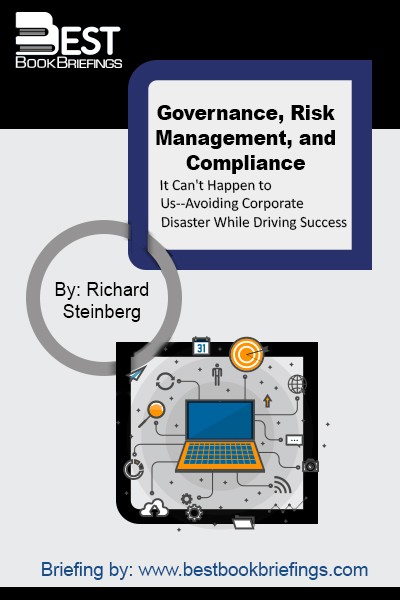Governance, Risk Management, and Compliance
It Can't Happen to Us--Avoiding Corporate Disaster While Driving Success
Editorial Review
Any chief executive whose ship is sinking, with the lights dimming and music fading, is likely to ask, “How did this happen? How did I allow myself and my company to end up like this?” Directors of once great companies also find themselves asking similar questions. “Did I and my fellow directors do what we needed to do in carrying out our oversight responsibilities? Could we have obtained the information we needed to see it coming and steered the company out of harm’s way?” This book is about answering those questions in advance – or rather avoiding having to ask them at all.
Book Reviews
Books on Related Topics

Risk Management methods are many and are fairly new. They are growing in popularity. Some are well-established and highly regarded. Some take a very soft qualitative approach and others are rigorously quantitative. When such methods are measured rigorously, they don't appear to work. The answer for the second question is also

Single Point of Failure: The 10 Essential Laws of Supply Chain Risk Management uses analogies and dozens of case histories to describe the risk parasite that infects all supply chains while revealing methods to neutralize that parasite.

It used to be said that¾It is not whether you win or lose, it’s how you play the game. That old saying might be fine to coach a soccer team. But in today’s dynamic working environment it’s all about winning. With that said, companies and individuals must focus on the mechanisms

What we believe about government—that we don’t make widgets, that we don’t have customers, and that we’re not here to make a profit—all feed the bigger myth: that we’re different. We Don’t Make Widgets explodes the myths that prevent dramatic improvement in government operations. The aim of this book is to

The phrase “skin in the game” is one we have often heard but rarely stopped to dissect truly. It is the backbone of risk management, and it’s also an astonishingly rich worldview that, as Taleb shows in this book, applies to all aspects of our lives. In his most provocative and



